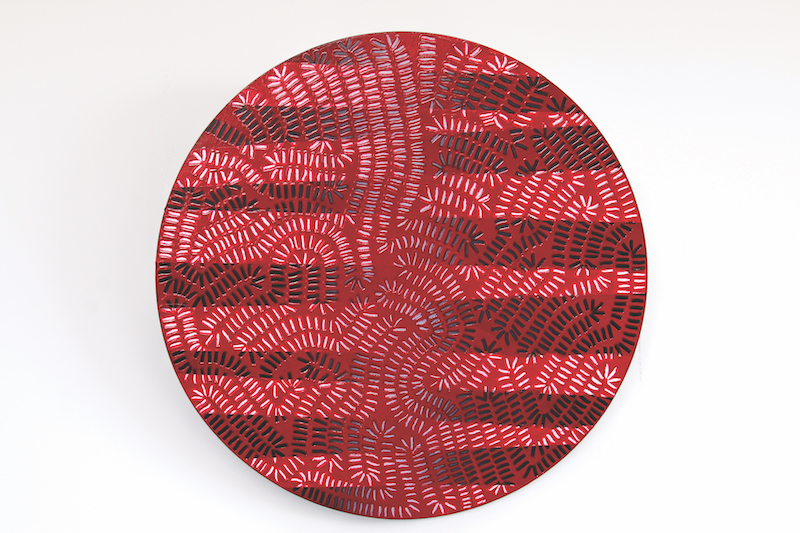The patterns of New Zealand-based artist Frankie Wilde’s practice are deeply personal, the physical journey of lines across a canvas not merely an act of careful mark-making. “Patterns, for me, represent stories,” she says. “They help create a sense of order and understanding within the chaos of feeling. The pattern itself can then take on the emotions and messages and make the feelings, ideas and thoughts I have into something more tangible.”
Using her practice as a meditative journey towards healing, each line is guided by emotion. The artist applies two coats of paint to her surface and then steadily scratches back the top layer in a twisting succession of dashes, creating a continuous path that either loops back on itself or journeys from a beginning to an end, similar to a labyrinth. ”Each mark represents a moment, all unique, and these marks eventually come together to create a journey, both for the eye and for the artist. The overall pattern defines the full experience, but it’s the tiny moments, the tiny marks, that define its shape and form.
“I want you to ask: ‘How much attention do we give these reoccurring small moments? The kids’ bedtime stories? Our morning cups of coffee? The daily commute?’ And when do we make the time and space to feel into our thoughts and emotions?”
Above: Frankie Wilde, Black, White & Red Thread, 2023. Acrylic on plywood round, 50 x 50cm. Courtesy: the artist.

Frankie Wilde, Firework, 2023. Acrylic on plywood round, 60 x 60cm. Courtesy: the artist.

Frankie Wilde, Grief, 2023. Acrylic on plywood round, 90 x 90cm. Courtesy: the artist.

